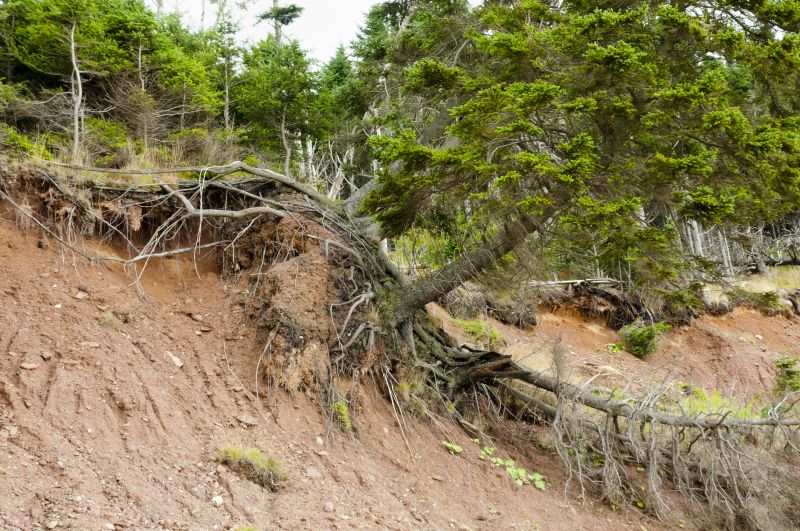Favorite Soil Erosion Control Products for Reliable Land Protection
Browse trusted products that effectively prevent soil erosion and help maintain healthy, stable land.
 Soil erosion prevention products are essential tools for maintaining the stability and health of land, especially in areas prone to water runoff, wind, or heavy rainfall. These products help protect the soil from being washed or blown away, preserving land integrity and supporting landscaping, agriculture, and construction projects. Selecting the right erosion control solutions depends on the specific site conditions, the severity of erosion, and the intended use of the land. From temporary measures to long-term solutions, there are numerous options available to suit different needs.
Soil erosion prevention products are essential tools for maintaining the stability and health of land, especially in areas prone to water runoff, wind, or heavy rainfall. These products help protect the soil from being washed or blown away, preserving land integrity and supporting landscaping, agriculture, and construction projects. Selecting the right erosion control solutions depends on the specific site conditions, the severity of erosion, and the intended use of the land. From temporary measures to long-term solutions, there are numerous options available to suit different needs.
Top Overall Option
Erosion Control Blanket
Erosion control blankets are versatile, easy-to-install solutions that provide immediate soil stabilization. Made from natural or synthetic fibers, these blankets protect against surface runoff and help establish vegetation quickly, making them suitable for a variety of applications including slopes, embankments, and landscaping projects.
Types of Products For Soil Erosion Preventions
Silt Fences
Temporary barriers made from woven fabric that trap sediment and slow water flow, ideal for construction sites and landscaping projects.
Erosion Control Blankets
Protective coverings made from natural or synthetic fibers that stabilize soil and promote vegetation growth on slopes.
Vegetative Mats
Pre-vegetated mats or seed mats that help establish ground cover quickly to prevent soil displacement.
Retaining Walls
Structural barriers built from concrete, stone, or timber designed to hold back soil and prevent landslides.
Gabion Baskets
Wire cages filled with rocks or other materials used to stabilize slopes and control runoff.
Terracing Systems
Step-like structures that reduce water runoff and soil erosion on steep slopes.
Riprap
Loose stones or concrete placed along shorelines or slopes to absorb and deflect water energy.
Geotextiles
Permeable fabrics used to reinforce soil and facilitate drainage while preventing erosion.
Mulching Materials
Organic or inorganic mulches that cover soil to protect against erosion and retain moisture.
Planting Staples and Erosion Control Fabric
Supports plant roots and stabilizes soil during establishment phases.
Drainage Systems
Channels, pipes, and catch basins designed to direct water flow and reduce surface runoff.
Check Dams
Small barriers placed across channels to slow water flow and trap sediment.
Soil Nailing
Inserting steel nails into unstable slopes to reinforce soil stability.
Hydroseeding
Spraying a mixture of seed, mulch, and fertilizer to quickly establish ground cover.
Erosion Control Wattle
Flexible, biodegradable barriers filled with straw or other materials to trap sediment and slow runoff.
Popular Choices
Widely used for temporary sediment control during construction and landscaping projects.
Commonly selected for slope stabilization and seedling protection.
Popular for quick ground cover establishment and erosion prevention.
Frequently used along shorelines and steep embankments to absorb water impact.
Chosen for soil reinforcement and drainage applications.
Essential for managing surface water and reducing erosion in large sites.
Popular for creating durable retaining structures and erosion barriers.
Commonly used to protect soil surface and support plant growth.
Effective for slowing water flow in channels and preventing sediment transport.
Often selected for rapid establishment of vegetative cover over large areas.
Popular for temporary stabilization on slopes and along waterways.
Erosion control methods can include physical barriers, plant-based solutions, and structural improvements. Physical barriers such as silt fences and erosion control blankets are commonly used to stabilize soil temporarily while vegetation establishes itself. Planting ground cover, grasses, or shrubs can also be an effective natural approach to hold soil in place and reduce runoff. Structural solutions like retaining walls and gabions provide more permanent stabilization for steeper slopes or heavily eroded areas.
Implementing these products correctly is crucial for effectiveness. Proper installation, maintenance, and understanding of the site conditions can significantly influence the success of erosion prevention efforts. When choosing products, consider factors such as durability, ease of installation, and compatibility with the landscape. Combining different types of erosion control products often yields the best results, especially on larger or more complex sites. Regular inspection and maintenance are recommended to ensure ongoing protection and to address any emerging issues promptly.
Overall, investing in the right soil erosion prevention products can help safeguard land, prevent property damage, and promote healthier soil conditions. Whether for a small garden slope or a large construction site, understanding the options available enables better planning and implementation of effective erosion control strategies.
Key Buying Considerations
- Site-specific conditions such as slope steepness, soil type, and water flow patterns influence product choice.
- Durability and material quality are important for long-lasting erosion control solutions.
- Ease of installation can impact project timelines and labor costs.
- Compatibility with existing landscape or infrastructure should be evaluated.
- Type of erosion (water, wind, or combined) determines suitable products and methods.
- Temporary versus permanent solutions should be considered based on project duration and goals.
- Environmental factors like rainfall intensity and runoff volume affect product effectiveness.
- Maintenance requirements should be assessed to ensure ongoing protection.
- Cost and availability may influence selection, especially for large-scale projects.
- Regulatory or site-specific compliance standards should be reviewed when applicable.
- Integration with vegetation planting strategies can enhance overall erosion control.
- Flexibility and adaptability of the product to different terrains are advantageous.
- Availability of technical support or installation guidance can facilitate successful deployment.
- Consideration of future site modifications or expansions may impact product choice.
- Assessing the environmental impact of materials used can be beneficial for overall project planning.
